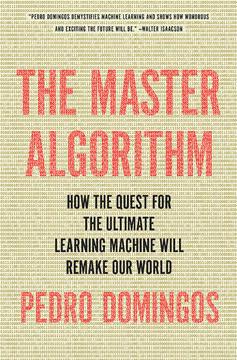Key Takeaways
1. Machine learning is revolutionizing our world, touching every aspect of our lives
"You may not know it, but machine learning is all around you."
Ubiquitous presence: Machine learning algorithms are deeply integrated into our daily lives, from the moment we wake up to when we go to sleep. They power search engines, spam filters, recommendation systems, and personal assistants like Siri. These algorithms are constantly learning and improving, making decisions and predictions that shape our experiences.
Diverse applications: The impact of machine learning extends far beyond consumer technology:
- Healthcare: Diagnosing diseases and predicting patient outcomes
- Finance: Detecting fraud and making investment decisions
- Transportation: Enabling self-driving cars and optimizing traffic flow
- Agriculture: Optimizing crop yields and resource management
- Entertainment: Personalizing content recommendations and creating art
As machine learning continues to advance, its influence on society will only grow, transforming industries and creating new possibilities we have yet to imagine.
2. The five tribes of machine learning: symbolists, connectionists, evolutionaries, Bayesians, and analogizers
"Each tribe has a set of core beliefs, and a particular problem that it cares most about."
Diverse approaches: The field of machine learning is not monolithic, but rather composed of five main schools of thought, each with its own philosophical underpinnings and preferred techniques:
-
Symbolists: Focus on logic and knowledge representation
- Key algorithm: Inverse deduction
- Strengths: Explainable AI, reasoning with rules
-
Connectionists: Inspired by the human brain
- Key algorithm: Backpropagation
- Strengths: Pattern recognition, deep learning
-
Evolutionaries: Simulate natural selection
- Key algorithm: Genetic programming
- Strengths: Optimization, adapting to changing environments
-
Bayesians: Emphasize probabilistic inference
- Key algorithm: Bayesian inference
- Strengths: Handling uncertainty, incorporating prior knowledge
-
Analogizers: Learn by finding similarities
- Key algorithm: Support vector machines
- Strengths: Classification, generalizing from examples
Understanding these different approaches is crucial for appreciating the diverse landscape of machine learning and the ongoing efforts to create more powerful and versatile AI systems.
3. The Master Algorithm: unifying machine learning approaches for universal problem-solving
"The Master Algorithm is to machine learning what the Standard Model is to particle physics or the Central Dogma to molecular biology: a unified theory that makes sense of everything we know to date, and lays the foundation for decades or centuries of future progress."
Theoretical breakthrough: The concept of a Master Algorithm represents the holy grail of machine learning—a single, universal learning algorithm capable of solving any problem given sufficient data. This idea challenges the current fragmented state of the field and proposes a unified approach to artificial intelligence.
Potential impact: A successful Master Algorithm would have profound implications:
- Accelerate scientific discoveries across disciplines
- Enable more efficient and powerful AI systems
- Provide deeper insights into the nature of intelligence and learning
- Potentially lead to artificial general intelligence (AGI)
While the Master Algorithm remains theoretical, the pursuit of this unifying principle drives innovation in machine learning and encourages researchers to think beyond the limitations of current approaches.
4. Supervised learning: teaching machines through labeled examples
"Machine learning turns this around: in goes the data and the desired result and out comes the algorithm that turns one into the other."
Learning from examples: Supervised learning is the most common form of machine learning, where algorithms learn to make predictions or decisions based on labeled training data. This approach mimics the way humans learn from experience and feedback.
Key aspects of supervised learning:
- Requires a large dataset of labeled examples
- Learns to map inputs to desired outputs
- Can be used for classification (predicting categories) or regression (predicting continuous values)
- Popular algorithms: decision trees, support vector machines, neural networks
Real-world applications:
- Image and speech recognition
- Spam detection
- Medical diagnosis
- Credit scoring
The success of supervised learning depends on the quality and quantity of labeled data, as well as the choice of appropriate algorithms and model architectures for the specific problem at hand.
5. Unsupervised learning: discovering patterns without explicit guidance
"Clustering and dimensionality reduction get us closer to human learning, but there's still something very important missing."
Finding hidden structures: Unsupervised learning algorithms aim to uncover patterns and relationships in data without the need for labeled examples. This approach is particularly valuable when dealing with large, complex datasets where meaningful categories or structures are not known in advance.
Key unsupervised learning techniques:
- Clustering: Grouping similar data points together
- Dimensionality reduction: Simplifying high-dimensional data while preserving important information
- Anomaly detection: Identifying unusual patterns or outliers
Applications and challenges:
- Market segmentation in marketing
- Topic modeling in natural language processing
- Feature learning for downstream tasks
- Discovering new categories in scientific data
Unsupervised learning often requires more sophisticated algorithms and careful interpretation of results, as the "ground truth" is not available for validation. However, it offers the potential for discovering truly novel insights and patterns in data.
6. Reinforcement learning: machines that learn through trial and error
"Reinforcement learning plays a part in every stage of your life."
Learning by doing: Reinforcement learning (RL) is inspired by the way humans and animals learn through interaction with their environment. RL agents learn to make sequences of decisions to maximize a reward signal, improving their performance over time through trial and error.
Key components of reinforcement learning:
- Agent: The learner or decision-maker
- Environment: The world in which the agent operates
- State: The current situation
- Action: Choices available to the agent
- Reward: Feedback signal indicating the desirability of an action
Real-world applications:
- Game playing (e.g., AlphaGo)
- Robotics and autonomous systems
- Resource management and scheduling
- Personalized recommendations
Reinforcement learning has shown remarkable success in complex domains, often surpassing human performance. However, challenges remain in terms of sample efficiency, exploration-exploitation trade-offs, and transferring learned skills to new environments.
7. The future of AI: balancing progress with ethical considerations
"The Master Algorithm is the last thing we'll ever have to invent because, once we let it loose, it will go on to invent everything else that can be invented."
Unprecedented potential: As machine learning and AI continue to advance, we are approaching a future where artificial intelligence could potentially surpass human capabilities in many domains. This prospect brings both excitement and concern, raising important questions about the role of AI in society and its impact on human life.
Ethical considerations and challenges:
- Ensuring AI systems are safe, reliable, and aligned with human values
- Addressing bias and fairness in AI decision-making
- Maintaining human control over critical systems
- Protecting privacy and personal data
- Managing the economic and social disruption caused by AI
Responsible development: As we push the boundaries of AI capabilities, it is crucial to develop robust frameworks for ethical AI development and deployment. This involves collaboration between researchers, policymakers, and the public to create guidelines and regulations that harness the benefits of AI while mitigating potential risks.
8. Big data and the curse of dimensionality: challenges and solutions
"The curse of dimensionality is the second worst problem in machine learning, after overfitting."
Exponential complexity: As the number of features or dimensions in a dataset increases, the amount of data required to make accurate predictions grows exponentially. This phenomenon, known as the curse of dimensionality, poses significant challenges for machine learning algorithms.
Challenges of high-dimensional data:
- Increased computational complexity
- Sparsity of data points in high-dimensional spaces
- Difficulty in visualizing and interpreting results
- Risk of overfitting due to the abundance of potential patterns
Strategies for mitigation:
- Feature selection: Identifying the most relevant features
- Dimensionality reduction techniques (e.g., PCA, t-SNE)
- Regularization to prevent overfitting
- Ensemble methods to combine multiple models
- Deep learning architectures that can learn hierarchical representations
Addressing the curse of dimensionality is crucial for developing scalable and effective machine learning solutions, especially as we deal with increasingly complex and high-dimensional datasets in various domains.
9. The impact of machine learning on jobs, privacy, and society
"Life is a game between you and the learners that surround you."
Transformative force: Machine learning is reshaping the job market, redefining privacy, and altering social dynamics. As AI systems become more capable, they are both creating new opportunities and disrupting existing industries and practices.
Impact on jobs and the economy:
- Automation of routine and cognitive tasks
- Creation of new roles focused on AI development and oversight
- Potential for increased productivity and economic growth
- Need for lifelong learning and skill adaptation
Privacy and data concerns:
- Increased data collection and analysis capabilities
- Potential for more targeted and intrusive surveillance
- Need for robust data protection regulations
- Balancing privacy with the benefits of personalized services
Societal implications:
- Changing social interactions and relationships
- Potential exacerbation of existing inequalities
- Ethical questions around AI decision-making
- Need for AI literacy and public engagement
As machine learning continues to evolve, it is crucial to proactively address these challenges and ensure that the benefits of AI are distributed equitably across society.
10. The quest for artificial general intelligence and its implications
"The Master Algorithm is our gateway to solving some of the hardest problems we face, from building domestic robots to curing cancer."
Beyond narrow AI: While current machine learning systems excel at specific tasks, the ultimate goal for many researchers is to create artificial general intelligence (AGI)—AI systems that can match or exceed human-level intelligence across a wide range of cognitive abilities.
Potential implications of AGI:
- Revolutionary advancements in science, medicine, and technology
- Profound economic and social changes
- Existential risks and safety concerns
- Philosophical questions about the nature of intelligence and consciousness
Challenges and considerations:
- Developing more robust and generalizable learning algorithms
- Creating AI systems with common sense reasoning and causal understanding
- Ensuring AGI systems are aligned with human values and goals
- Managing the transition to a world where AGI exists
The pursuit of AGI represents both the greatest promise and the greatest challenge of machine learning. As we continue to make progress towards this goal, it is essential to consider the long-term implications and work towards developing AGI in a responsible and beneficial manner.
Last updated:
FAQ
What's The Master Algorithm about?
- Exploration of Machine Learning: The Master Algorithm by Pedro Domingos explores the concept of a universal learning algorithm that can derive knowledge from any data set.
- Five Tribes of Learning: It categorizes machine learning into five main schools: Symbolists, Connectionists, Evolutionaries, Bayesians, and Analogizers, each with its own approach.
- Real-World Applications: The book illustrates how machine learning impacts various aspects of life, from online recommendations to medical diagnoses.
Why should I read The Master Algorithm?
- Understanding Machine Learning: The book provides a clear introduction to machine learning concepts, suitable for both technical and non-technical readers.
- Future Implications: It discusses the potential future of machine learning and its societal implications, helping readers navigate the digital landscape.
- Inspiration for Innovators: Domingos encourages readers to think critically about algorithms and consider contributing to the field of machine learning.
What are the key takeaways of The Master Algorithm?
- Quest for a Universal Algorithm: The central theme is the search for a "Master Algorithm" that can learn from any data and solve any problem.
- Integration of Learning Approaches: Emphasizes the importance of integrating the strengths of the five tribes to create a more powerful algorithm.
- Real-World Impact: Highlights how machine learning is transforming industries and everyday life, emphasizing the need to understand these changes.
What are the best quotes from The Master Algorithm and what do they mean?
- “You can’t control what you don’t understand.”: Emphasizes the need for understanding machine learning algorithms as they influence decision-making.
- “Machine learning is something new under the sun: a technology that builds itself.”: Highlights the transformative potential of machine learning, where algorithms can create new algorithms.
- “All knowledge—past, present, and future—can be derived from data by a single, universal learning algorithm.”: Suggests that a Master Algorithm could unlock vast amounts of knowledge.
What are the five tribes of machine learning discussed in The Master Algorithm?
- Symbolists: Focus on manipulating symbols and logical reasoning, using inverse deduction as their master algorithm.
- Connectionists: Use neural networks inspired by the brain's structure, with backpropagation as their master algorithm.
- Evolutionaries: Apply natural selection principles, using genetic programming to evolve solutions over time.
- Bayesians: Emphasize probabilistic reasoning, using Bayesian networks to model relationships and update beliefs.
- Analogizers: Learn by finding similarities between instances, often using nearest-neighbor algorithms.
How does The Master Algorithm define the concept of a Master Algorithm?
- Universal Learner: Envisioned as a single algorithm that can learn from any type of data and solve any learning problem.
- Combining Methods: Utilizes various learning techniques, such as genetic algorithms and gradient descent, to adapt to different contexts.
- Real-World Applications: Would have profound implications for fields like healthcare, finance, and education, leading to better decision-making.
How does The Master Algorithm relate to real-world applications?
- Healthcare Innovations: Machine learning can improve medical diagnoses and treatment plans by analyzing patient data.
- Business Efficiency: Companies use machine learning to optimize operations, predict customer preferences, and improve supply chain management.
- Personalization in Technology: Algorithms power personalized recommendations on platforms like Netflix and Amazon, tailoring content to individual preferences.
What is Hume’s problem of induction as described in The Master Algorithm?
- Challenge of Generalization: Questions how we can justify generalizing from observed instances to unobserved ones.
- Implications for Learning: Central to machine learning, as algorithms must generalize from training data to make predictions about new data.
- Need for Knowledge: Effective learning requires prior knowledge to guide the induction process, avoiding incorrect generalizations.
What is the significance of Bayes’ theorem in The Master Algorithm?
- Foundation of Bayesian Learning: Provides a framework for updating beliefs based on new evidence, central to Bayesian machine learning.
- Practical Applications: Used in medical diagnosis and spam filtering, combining evidence to make informed predictions.
- Connection to the Master Algorithm: Domingos argues that the Master Algorithm must incorporate Bayesian principles for effective learning.
How does The Master Algorithm address the exploration-exploitation dilemma?
- Balancing Strategies: Involves deciding whether to explore new options or exploit known ones for optimal learning outcomes.
- Genetic Algorithms as a Solution: Explore multiple hypotheses simultaneously, allowing for efficient search for optimal solutions.
- Real-World Implications: Crucial for developing algorithms that adapt to changing environments and make the best decisions.
What role does dimensionality reduction play in machine learning as discussed in The Master Algorithm?
- Simplifying Data: Techniques like principal component analysis (PCA) reduce variables while retaining essential information.
- Improving Performance: Focuses on important dimensions, helping algorithms perform better and faster, mitigating overfitting.
- Applications Across Fields: Used in image processing, natural language processing, and bioinformatics for efficient data analysis.
What are the limitations of the Master Algorithm?
- Dependence on Data Quality: Effectiveness is contingent on the quality and quantity of data available, risking inaccurate predictions.
- Complexity of Real-World Problems: May struggle with tasks requiring deep contextual understanding or nuanced reasoning.
- Ethical Considerations: Raises concerns about biases and responsible development as machine learning algorithms become more powerful.
Review Summary
The Master Algorithm receives mixed reviews, with praise for its comprehensive overview of machine learning approaches and accessible explanations for non-experts. Many readers found it informative and thought-provoking, particularly in its discussions of AI's potential impact on society. However, some criticized the book for being overly technical in parts, repetitive, or lacking depth in certain areas. The author's optimistic view of AI's future and his proposal for a unified learning algorithm sparked both interest and skepticism among readers.
Similar Books
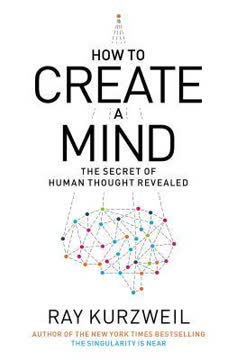


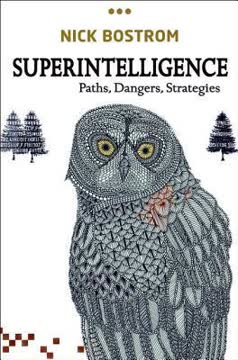
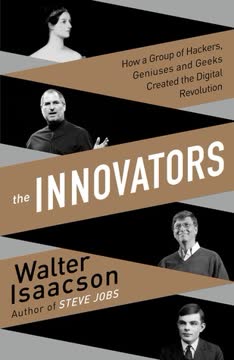

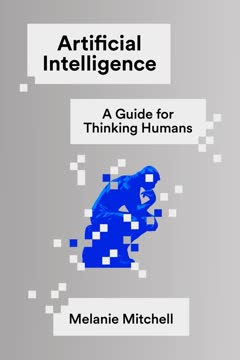
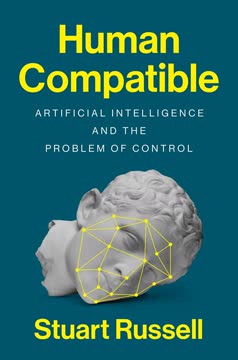


Download PDF
Download EPUB
.epub digital book format is ideal for reading ebooks on phones, tablets, and e-readers.
